Abstract
There are various factors affecting the fracture of NiTi rotary files. This study was performed to evaluate the effect of cross sectional area, pecking motion and pecking distance on the cyclic fatigue fracture of different NiTi files. Five different NiTi files-Profile®(Maillefer, Ballaigue, Switzerland), ProTaper™ (Maillefer, Ballaigue, Switzerland), K3® (SybronEndo, Orange, CA), Hero 642® (Micro-mega, Besancon, France), Hero Shaper®(Micro-mega, Besancon, France)-were used. Each file was embedded in temporary resin, sectioned horizontally and observed with scanning electron microscope. The ratio of cross-sectional area to the circumscribed circle was calculated. Special device was fabricated to simulate the cyclic fatigue fracture of NiTi file in the curved canal,. On this device, NiTi files were rotated (300rpm) with different pecking distances (3 mm or 6 mm) and with different motions (static motion or dynamic pecking motion). Time until fracture occurs was measured. The results demonstrated that cross-sectional area didn't have any effect on the time of file fracture. Among the files, Profile® took the longest time to be fractured. Between the pecking motions, dynamic motion took the longer time to be fractured than static motion. There was no significant difference between the pecking distances with dynamic motion, however with static motion, the longer time was taken at 3mm distance. In this study, we could suggest that dynamic pecking motion would lengthen the time for NiTi file to be fractured from cyclic fatigue.
Figures and Tables
References
1. Serene TP, Adams JD, Saxena A. Nickel-Titanium instruments: applications in Endodontics. 1995. St.Louis: Ishiyaku EuroAmerica, Inc.
2. Yoneyama T, Doi H, Hamanaka H. Influence of composition and purity on tensile properties of NiTi alloy castings. Dent Mater J. 1992. 11:157–164.

3. Walia HM, Brantley WA, Gerstein H. An initial investigation of the bending and torsional properties of nitinol root canal files. J Endod. 1988. 14:346–351.

4. Stoekel D, Yu W. Superelastic NiTi wire. Wire J Int. 1991. 3:45–50.
5. Glossen CR, Haller RH, Dove SB, del Rio CE. A comparison of root canal preparations using NiTi hand, NiTi engine driven, and K-Flex endodontic enstruments. J Endod. 1995. 21:146–151.
6. Cohen S, Burns RC. Pathways of the pulp. 1998. 7th ed. St.Louis: Mosby Year Book, Inc;255.
7. Serene TP, Adams JD, Saxena A. Nickel-Titanium instruments: applications in Endodontics. 1995. St.Louis: Ishiyaku EuroAmerica, Inc;62–63.
8. Zelada G, Varela P, Martin B, Bahilo JG, Magan F, Ahn S. The effect of rotational speed and the curvature of root canals on the breakage of rotary endodontic instruments. J Endod. 2002. 28:540–542.

9. Pruett JP, Clement DJ, Carnes DL. Cyclic fatigue testing of nickel-titanium endodontic instruments. J Endod. 1997. 23:77–85.

10. Turpin YL, Chagneau F, Vulcain JM. Impact of two theoretical cross-sections on torsional and bending stresses of nickel-titanium root canal instrument models. J Endod. 2000. 26:414–417.

11. Li UM, Lee BS, Shih CT, Lan WH, Lin CP. Cyclic fatigue of endodontic nickel titanium rotary instruments: Static and dynamic tests. J Endod. 2002. 28:448–451.

12. Shin YM, Kim ES, Kim KM, Kum KY. Effect Of surface defects and cross-sectional configuration on the fatigue fracture of NiTi rotary files under cyclic loading. J Korean Acad Conserv Dent. 2004. 29:267–272.

13. Park WK, Lee HJ, Hur B. Sahping ability of NiTi rotary files. J Korean Acad Conserv Dent. 2004. 29:44–50.




 PDF
PDF ePub
ePub Citation
Citation Print
Print




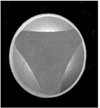
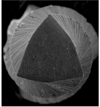
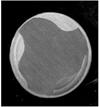
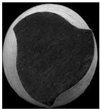
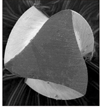


 XML Download
XML Download